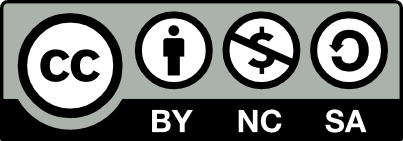/
Dogodki
/
Konference
Comparative analysis of education policies regarding children with disabilities in Yugoslavia and Norway 1945-1992


To delo avtorja Miloš Paunović je ponujeno pod Creative Commons Priznanje avtorstva-Nekomercialno-Deljenje pod enakimi pogoji 4.0 Mednarodna
Datoteke (1)
Opis
Since the late 20th century, the tendency that’s been coming to the fore in Europe when it comes to education of children with disabilities has been the gradual introduction of inclusive education. This approach, however, had its predecessors in almost every European country: segregation and integration, which sometimes overlapped during the period in question, but which (especially integration) had laid the groundwork for inclusive education. This paper will represent a study in comparative education. It seeks to compare policies concerning segregation and integration in two European countries - albeit not overly similar to one another - and political systems, with different societal legacies from previous eras. This will mainly be done by analysing relevant Yugoslav and Norwegian legislations and other regulatory acts (directives, guidelines, etc., when applicable). Also, relevant literature in Norwegian, English and in languages of former Yugoslavia will be used when it is necessary to shed further light on the dominant social discourses that created wider contexts in which those education policies played out. The aim is to further our understanding of the role of those wider contexts in the law-making and policy-making processes. To achieve that aim, a comparative approach might be a good fit. The paper will also discuss different speeds at which the two countries’ education systems arrived at practicing, and legislating for, integration as the desirable approach to the education of children with disabilities. This will help us put the comparison’s outcome(s) into a broader European perspective, since starting from the 1960s it was the principle of integration that was gaining ground in much of western and northern Europe.
Metapodatki (12)
- identifikatorhttps://hdl.handle.net/11686/71093
- naslov
- Comparative analysis of education policies regarding children with disabilities in Yugoslavia and Norway 1945-1992
- avtor
- Miloš Paunović
- soavtor
- Jelena Seferović (mod.)
- predmet
- otroci
- izobraževanje
- gibalno ovirani
- senzorične motnje
- Jugoslavija
- Norveška
- opis
- Since the late 20th century, the tendency that’s been coming to the fore in Europe when it comes to education of children with disabilities has been the gradual introduction of inclusive education. This approach, however, had its predecessors in almost every European country: segregation and integration, which sometimes overlapped during the period in question, but which (especially integration) had laid the groundwork for inclusive education. This paper will represent a study in comparative education. It seeks to compare policies concerning segregation and integration in two European countries - albeit not overly similar to one another - and political systems, with different societal legacies from previous eras. This will mainly be done by analysing relevant Yugoslav and Norwegian legislations and other regulatory acts (directives, guidelines, etc., when applicable). Also, relevant literature in Norwegian, English and in languages of former Yugoslavia will be used when it is necessary to shed further light on the dominant social discourses that created wider contexts in which those education policies played out. The aim is to further our understanding of the role of those wider contexts in the law-making and policy-making processes. To achieve that aim, a comparative approach might be a good fit. The paper will also discuss different speeds at which the two countries’ education systems arrived at practicing, and legislating for, integration as the desirable approach to the education of children with disabilities. This will help us put the comparison’s outcome(s) into a broader European perspective, since starting from the 1960s it was the principle of integration that was gaining ground in much of western and northern Europe.
- založnik
- Inštitut za novejšo zgodovino
- datum
- 04. 10. 2024
- tip
- video
- jezik
- Angleščina
- jeDelOd
- pravice
- licenca: ccByNcSa
